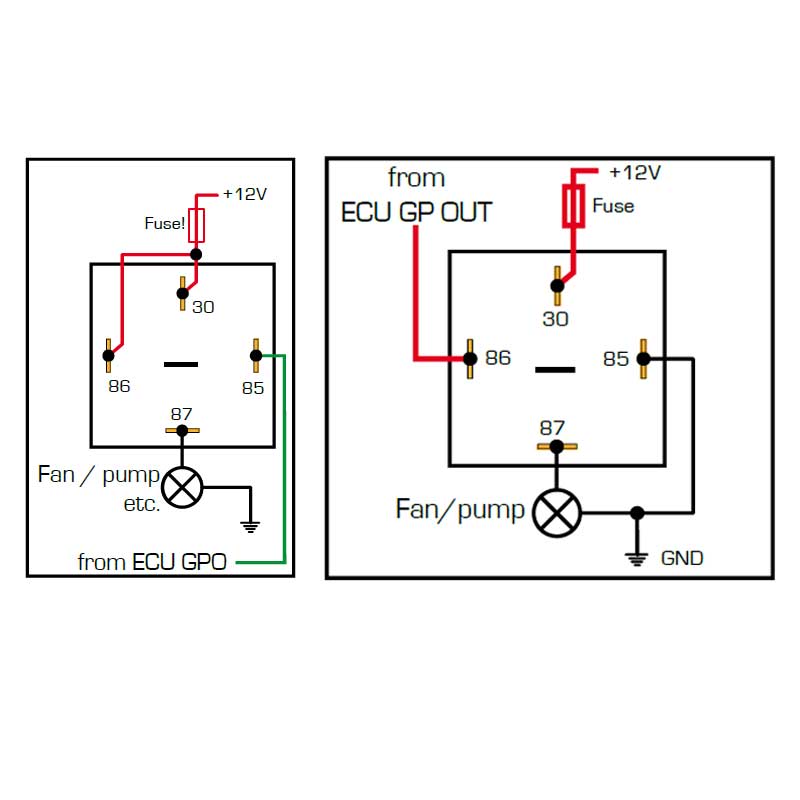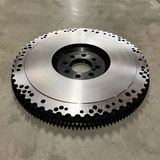Relay - Information

Information about relays and their function as well as wiring.
- What is a relay
- Different types of relays
- Choosing the right one
- Installation
- Accessories
- Problems
1 ▼
What is a relay
A relay is an electrically controlled switch, one might say. Through a weak control voltage, the relay is activated and can thus regulate the opening and closing of a significantly stronger current circuit.
This is best explained with an image according to point one of the installation.
Relays for vehicles come in variants for different voltages:
- 6v, as found in older cars
- 12v, which is what most cars have today
- 24v, typically used in heavier machinery
2 ▼
Different types of relays
- Starter Relay
Used to provide the starter motor with the power it needs. - Turn Signal Relay
Used for the car's turn signals to make the lights blink by controlling the timing. - Single Relay
A simple relay with one characteristic, but may have multiple outputs. Also available with a fuse. - Double Relay
A combined relay with two different or identical characteristics. Also available with a fuse. - Solid State Relay
This functions like a standard relay with the difference that it has no moving internal parts. Solid state devices tend to get hot, so it is important to place them with good ventilation.
Function of Pull-in Relay
- No control voltage = circuit is open = relay is off = No current can pass
- Control voltage applied = circuit is closed = relay is on = current can pass
Function of Changeover Relay
The same as a pull-in relay but with two circuits. Circuit 1 and Circuit 2.
- Without control voltage, circuit 1 functions but not circuit 2
- With control voltage, circuit 2 functions but not circuit 1
3 ▼
Installation
To correctly connect a relay, start by reviewing the wiring diagram. Make sure your relay is securely mounted once the connection is made so that there is no possibility of the wiring coming loose or vibrating free, as loose connections can lead to fire hazards.
There are several different tests to check if a relay is functioning properly. Here are a couple of simple tips:
- Check the control signal.
- When checking the control signal, ensure that the two pins that are supposed to drive the load are making contact.
Wiring of the relay can look like the image showing two examples.
Pins 85 and 86 are the control signals
One of these pins should be grounded, and the other should be connected to +12v. It is a coil that is activated, and thus it is not polarity-sensitive.
Pins 87 and 30 drive the load circuit.
When the control signal activates the coil in the relay, it closes the circuit between pins 87 and 30, thus activating the load. Here, it is possible to close either a grounded circuit or a +12v circuit.

4 ▼
Accessories
- Relay Holder
A holder for the relay. For a neat and secure installation. - Relay Socket
To easily connect a relay, a relay socket/connector is very convenient to use.
5 ▼
Problems
- Weak Control Voltage
The control voltage is too weak, so the coil is never activated. A weak control current can also damage the relay. This can occur, for example, with low battery voltage. - Poor Connection
Just like all connections, a poor connection can cause problems.
▼
▼
-
Engine management / Electric
- Engine control system: The various parts available
- Ignition System Information
- Install motor control
- Pressure sensor - Information
- Temperature sensor - Information
- Buttons - Switches - Information
- Connectors - Information
- Cooling fan car - Information
- Exhaust gas temperature sensor - EGT Sensor
- Lambda sensor - Wide band lambda
- Relay - Information
- Relay box - Fuse central
- CAN protocol - Canbus
- Ethanol sensor - Information
- Gauges and Dash
- Trigger sensor information
- Dimensioning of cable [and fuse size]
- Distributor Problems (And Solution)
- How does an Ignition Coil work?











































